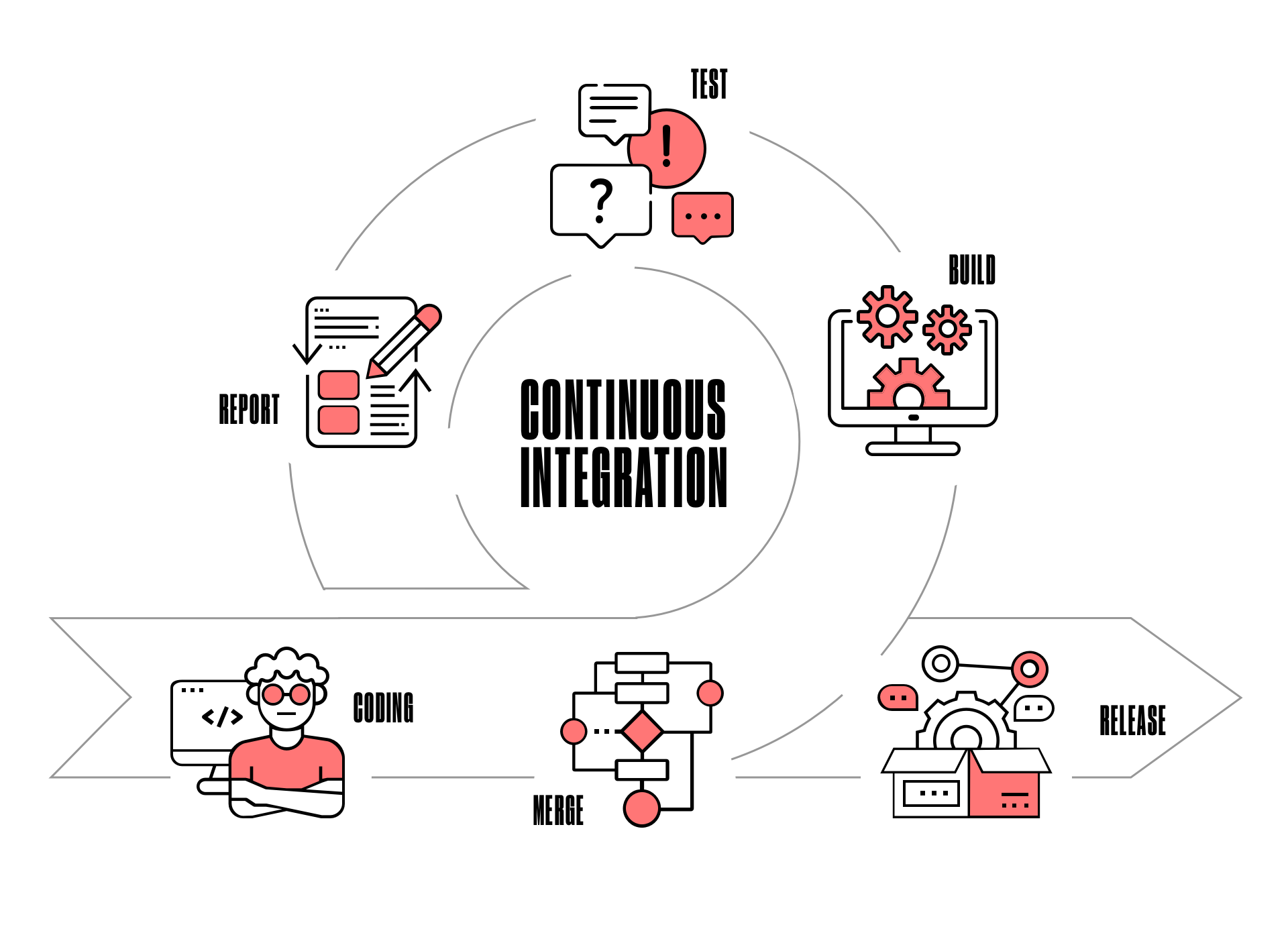Continuous Integration
PROJECT SUMMARY

CHALLENGE
Eliminate the risk of bugs when implementing new functionality in the existing platform and increase test coverage
PRODUCT
A social platform
DELIVERABLES
We’ve switched to continuous testing & delivery and integrated a scalable test automation frameworkINTRO
Introducing change in a large and complex system is often tricky. Adding new features or fixing old issues with every new iteration may affect existing product functionality. To achieve a certain level of quality, proper testing is pivotal. Manual testing can be time-consuming, requiring additional investments in human resources.
In our previous case study, we talked about how to reduce the time spent on regression testing and enable QA engineers to achieve better test coverage regularly. In this part, we’re going to focus on how to automate steps in the software delivery process with continuous integration.
OVERVIEW

For our client, we developed a social platform. The challenge was to help deliver quality and stable product.
CHALLENGE
The platform was in its growth phase with a number of additional features. There was an increased amount of dependencies in the system, which led to the fact that sometimes writing new code and refactoring was incompatible with the existing code. For all that, manual testing was giving a slow response.
In such circumstances, our product team understood the risks of errors and bugs when implementing the new functionality was high. Changing requirements resulted in the refactoring part of the system so that it could meet the new requirements. Each refactoring affected the finished functionality. In addition, regression testing was increasing. The QA team was required to spend less time on regression testing each time when refactoring was performed. We wanted to improve the speed and consistency of delivery, as well as the QA team productivity and efficiency.

In addition, during the traffic peaks, the interface loading time was about 15 seconds, which is just inexcusable with regard to user experience.
For this reason, the client required an infrastructure that would be able to manage high amounts of web traffic and scale seamlessly to varying loads.
SOLUTION
In order to achieve objectives, avoid defect deployments, and ease releases, we’ve suggested turning our current pipeline to CI/CD.
Continuous integration (CI) is a development practice of automating the build and testing the code on each update. It allows us to work in small increments and detect and resolve errors at the early stages.
Once the integration is complete and all tests have passed, we add continuous delivery (CD), where code changes are automatically prepared for the deployment for all the servers. CI/CD helps our team to be more productive when shipping software with quality build. Changes to the pipeline brought corresponding changes to the build system’s structure and flow.

Multiple stages have been separated to parallelize the work, speed up the process, and make it close to DevOps standards. Additionally, this approach allowed us to receive faster feedback and do work more effectively. We also prepared a scalable test automation framework that we integrated with our CI system. It enabled developers to launch it locally against any built part of the system. This was achieved by using a containerized environment (docker) for the data aggregation and test execution.
Documentation is an important part of agile software development projects. One of the reasons for writing automated tests is that tests can act as useful documentation for a system. A well-configured CI allowed us effortlessly to obtain up-to-date documentation that evolves naturally with a system.
VALUE DELIVERED
Let's create something
awesomeOUR RECENT PROJECTS
 REDUCE REGRESSION TIME
REDUCE REGRESSION TIME
- social platform
- test suite optimization
- automated regression testing
- test-driven development (TDD)
 REAL-TIME DATA SYNCHRONIZATION
REAL-TIME DATA SYNCHRONIZATION
- productivity app
- debugging
- data synchronization
- offline-first approach
